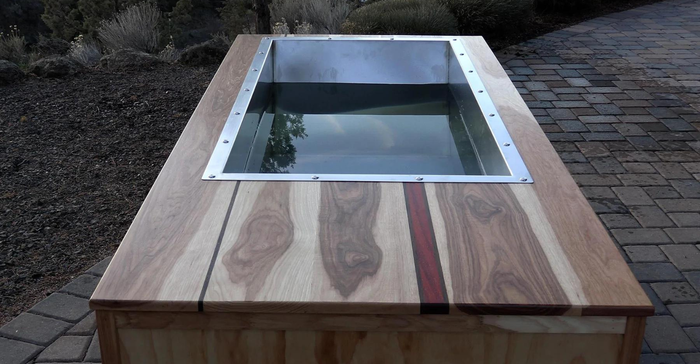Cold-water therapy is getting increasing attention for personal wellness, and manufacturers are meeting demand with a growing array of options for the home.
December 20, 2022

Cold-water therapy using ice baths and cold plunge pools (and nature) isn’t a new phenomenon—the practice goes back centuries, and it’s been a common recovery tool for professional athletes. But what was once more of a fringe activity in the U.S., or at least one reserved for commercial practice, is becoming more mainstream as Americans embrace wellness and increasingly want those benefits in the comfort of their homes.
As a result, “the demand has been very, very strong,” said Alejandro Rostoker, CEO of manufacturer Polar Monkeys. “A lot of new companies are popping up, so there’s a lot of competition but also a lot of demand.”
What are ice baths?
Ice baths and cold plunge pools are exactly what they sound like: typically hot-tub-sized units in which a person immerses themselves in cold water for a short period of time.
“By rapidly cooling the body in the cold plunge tank, blood circulation is stimulated, pores are closed and detoxified. Cold plunge pools also numb the joints and are effective in reducing pain and relieving muscle spasms,” said Diamond Spas, which notes that the cold water plunging releases hormones and endorphins and can stimulate the immune system.
Rostoker said that two to three minutes of cold exposure leads to an increase in beneficial neurotransmitters like dopamine (which is good for focus and mood control) and serotonin, providing mental health benefits such as increased clarity, focus and energy.
Specifying ice baths
Ice baths and cold plunge pools come in various forms and price ranges. In fact, the effect can be achieved in an extremely low-tech way by filling a large tub, barrel or container with ice water. But for long-term enthusiasts, this method can be messy, cumbersome and inefficient, Rostoker noted.
Permanent ice bath units, which offer a more premium appearance, use a chiller or cooling compressor to bring the water temperature down (and keep it there) rather than relying on ice. These units often resemble freestanding bathtubs or high-end hot tubs, and the principles and components—water pump, filtration and sanitation—are similar to hot tubs, as well.
In addition, some units are designed solely for use as cold water pools, but others can serve dual purposes with heating and cooling options.
Many use standard 110/120 voltages, but a dedicated breaker may be required due to the energy consumption, Rostoker said, noting that his company’s units use about the same amount of energy as a refrigerator.
Just as with hot tubs, due diligence is required both before and after installation of an ice bath. Many units can be used outdoors but may require placement under cover and out of harsh weather. Structural requirements for the weight also need to be considered, as well as any other requirements or restrictions.
Users will want to consult their doctor before engaging in cold water therapy to ensure there are no medical reasons why they shouldn’t partake, and they should follow guidelines for temperature levels and duration of use.
With the ever-increasing focus on personal care and wellness, a trend only amplified by the pandemic, along with greater exposure through celebrities and on social media platforms, it’s not surprising that attention to cold water therapy is growing. While it’s unknown if ice baths will ever reach the popularity levels of hot tubs, they’re coming on strong as another option for the home.
About the Author(s)
You May Also Like




